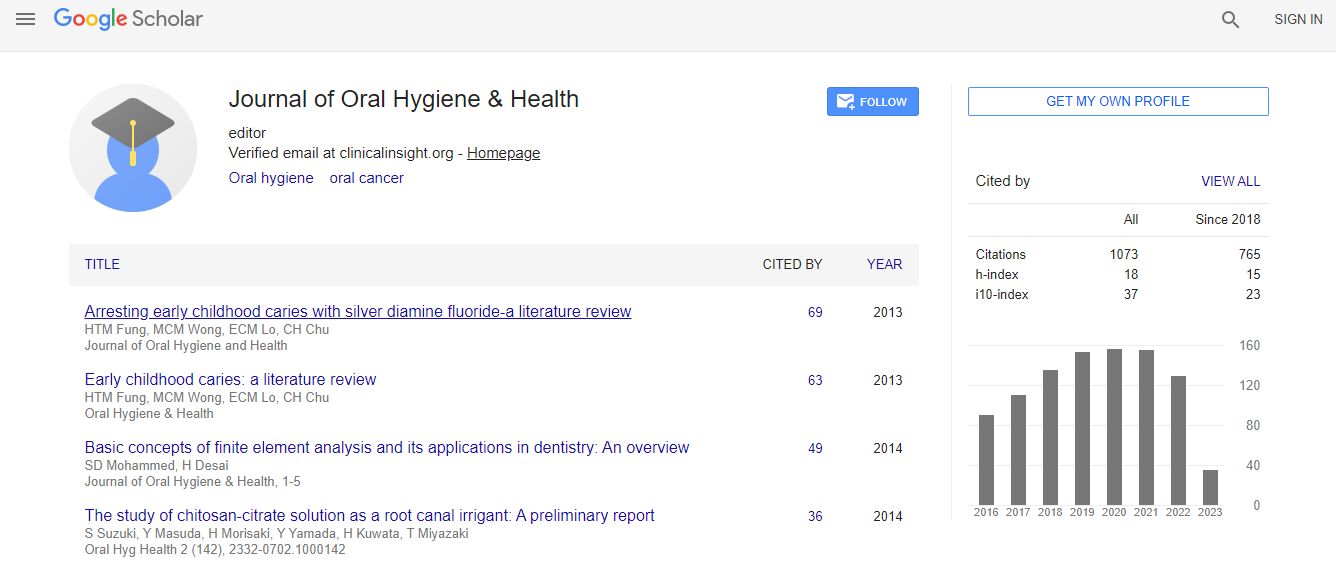Research Article
Oral Health Disparities and Unmet Dental Needs among Preschool Children in Chelsea, Massachusetts: Exploring Mechanisms, Defining Solutions
Inyang Isong1,2*, Laila Dantas3,4, Macda Gerard5 and Karen Kuhlthau2,6
1Boston Children’s Hospital, Boston, MA, USA
2Harvard Medical School, Boston, MA, USA
3Cambridge Health Alliance, Cambridge, MA, USA
4Harvard School of Dental Medicine, Boston, MA, USA
5Department of Public Health, Brown University, Providence, RI, USA
6Center for Child & Adolescent Health Research and Policy, MGHfC, Boston, MA, USA
- *Corresponding Author:
- Inyang A Isong
Children’s Hospital Primary Care Center
Children’s Hospital, 300 Longwood Ave
Boston, MA 02115, USA
Tel: 6173557701
E-mail: inyang.isong@childrens.harvard.edu
Received Date: March 26, 2014; Accepted Date: May 24, 2014; Published Date: June 01, 2014
Citation:Isong I, Dantas L, Gerard M, Kuhlthau K (2014) Oral Health Disparities and Unmet Dental Needs among Preschool Children in Chelsea, MA: Exploring Mechanisms, Defining Solutions. J Oral Hyg Health 2:138. doi: 10.4172/2332-0702.1000138
Copyright: © 2014 Isong I, et al. This is an open-access article distributed under the terms of the Creative Commons Attribution License, which permits unrestricted use, distribution, and reproduction in any medium, provided the original author and source are credited.
Abstract
Background: Significant disparities exist in children’s receipt of preventive dental care (PDC) in the United States. Many of the children at greatest risk of dental disease do not receive timely PDC; when they do receive dental care, it is often more for relief of dental pain. Chelsea is a low-income, diverse Massachusetts community with high rates of untreated childhood caries. There are various dental resources available in Chelsea, yet many children do not access dental care at levels equivalent to their needs.
Objective: Using Chelsea as a case-study, to explore factors contributing to forgone PDC (including the age 1 dental visit) in an in-depth way.
Methods: We used a qualitative study design that included semi-structured interviews with parents of preschool children residing in Chelsea, and Chelsea-based providers including pediatricians, dentists, a dental hygienist and early childhood care providers. We examined: a) parents’ dental attitudes and oral health cultural beliefs; b) parents’ and providers’ perspectives on facilitators and barriers to PDC, reasons for unmet needs, and proposed solutions to address the problem. We recorded, transcribed and independently coded all interviews. Using rigorous, iterative qualitative data analyses procedures, we identified emergent themes.
Results: Factors perceived to facilitate receipt of PDC included Head-Start oral health policies, strong pediatric primary care/dental linkages, community outreach and advertising, and parents’ own oral health experiences. Most parents and providers perceived there to be an adequate number of accessible dental services and resources in Chelsea, including for Medicaid enrollees. However, several barriers impeded children from receiving timely PDC, the most frequently cited being insurance related problems for children and adults. Other barriers included limited dental services for children <2 years, perceived poor quality of some dental practices, lack of emphasis on preventionbased dental care, poor care-coordination, and insufficient culturally-appropriate care. Important family-level barriers included parental oral health literacy, cultural factors, limited English proficiency and competing priorities. Several solutions were proposed to address identified barriers.
Conclusion: Even in a community with a considerable number of dental resources, various factors may preclude
access to these services by preschool-aged children. Opportunities exist to address modifiable factors through
strategic oral health policies, community outreach and improved care coordination between physicians, dentists and early childhood care providers.

 Spanish
Spanish  Chinese
Chinese  Russian
Russian  German
German  French
French  Japanese
Japanese  Portuguese
Portuguese  Hindi
Hindi 
